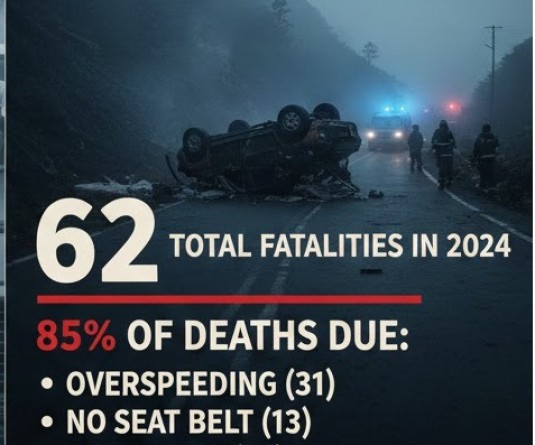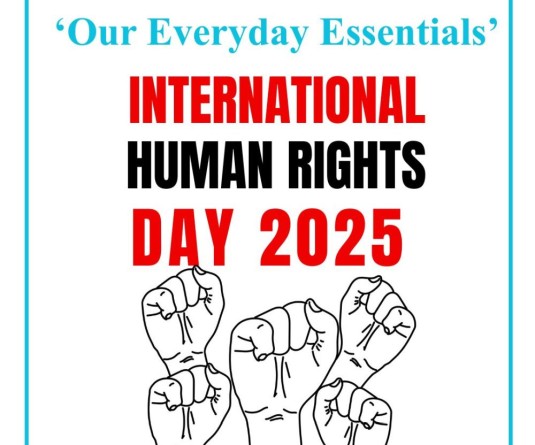The then Governor of Nagaland O.P Sharma, former Chief Minister Dr SC Jamir and his wife and other dignitaries viewing an antique logdrum at the Kohima Local Ground during the first Hornbill Festival in 2000. Photo Courtesy: The Warrior/DIPR

Common & Unified Celebration of the Rich Cultural Heritage of Nagaland
Vishü Rita Krocha
Kohima | November 30
“This festival was initially envisaged as a tourism promotion activity but, in the process, it has also turned out to be an attempt, the first of its kind, to have a common and a unified celebration of the rich cultural and traditional heritage of the tribes of Nagaland. Under one common festival, we are today making a showcase of all the colours, diversity and the uniqueness of the Naga people.”

So read an extract of the inaugural speech of Dr. S.C Jamir, former Chief Minister of Nagaland under whose leadership, the first edition of Hornbill Festival began 25 years ago in the year 2000 at Kohima Local Ground. He had also declared during the time that Hornbill Festival would be a ‘Window to Nagaland.’ “We hope that in the coming years, as the festival gains popularity and generate interest amongst the travel trade, our people would be directly benefited in terms of economic up-liftment and sustainable development of the state.”
Sure enough, Hornbill Festival has emerged as a significant catalyst for economic growth over the last 25 years. As per the Report on Economic Assessment of Hornbill Festival, the 24th Edition of Hornbill Festival witnessed a tourist inflow of 1,54,057 visitors and generated approximately Rs 131 crore, asserting the fact that although the government’s revenue collection might be modest, the festival's primary impact lies in its ability to stimulate economic growth at the grassroots level.

“With the support of the government, it has come to a point where we can’t measure the economic impact if you take the whole ecosystem into perspective,”remarked Richard Belho, Bamboo Architect & Founder of Zynorique Initiatives, in this regard.
Making his point, he underscored that for instance, it starts from the booking of flight from the US or some other country of origin, going on to have its economic impact in the North East and eventually the state, where the resources or services used by travellers are all part of the ecosystem.
“The positivity far outweighs the negativity”, he maintained while also pointing out that it is not only impacting Nagaland directly but the entire North East that comes in respect of booking flights, and meeting other requirements while it also gives chances to explore more villages. “The whole publicity being generated through Hornbill Festival also helps Nagaland”, he put across.
“If you want to pick the negative sides, there will be some negatives as is natural for any event in every part of the world”, he went on to say. Asserting that the Festival is creating a lot of opportunities, he also observed that alongside, “our people are also getting skilled at hospitality.” “Everyone comes with an idea, every year, the number of entrepreneurs is increasing, it is healthy competition”, he maintained while adding that many of our local entrepreneurs are able generate income before Christmas.

‘Hornbill Festival has helped revive and preserve our cultural heritage’
At the core of the Hornbill Festival, which, as also pronounced during the inaugural function of the first Hornbill Festival in 2000 is “to have a common and a unified celebration of the rich cultural and traditional heritage of the tribes of Nagaland.”
Echoing the same sentiments, Richard Belho underscored that, “this is one platform where people from outside come, just to see our cultural troupes perform and it is helping to both revive and preserve our cultural heritage.” “It’s only because of this reason, people are coming”, he reiterated.
In the meantime, he emphasized that it has been instrumental in “our own search for our roots and identity, and is more collective with people from all tribes coming together” while noting that most of the time, tribes have the tendency of being disunited.
He also underscored that “Tourism does not come first, but our Art and Culture comes first.” In this connection, he illustrated that “ours is not like for Bryan Adams and the like to come and play here” even while reaffirming that “at the core of this festival is the Cultural Troupes with their songs and dances.”
‘Collective Heritage, the real essence of the Hornbill Festival’
“The songs are the stories trapped in time and the dances are moves that transcends generations; events narrated in action. The colours and patterns of our woven fabric are the statement of skill, creative inspiration and mood palette of the old, our treasured Heritage”, he said.
Further highlighting that “the ornaments and decorations, the food and drinks, the wood carvings and stoneworks, the ceremonies and festivals, are all part and parcel of our Collective Heritage”, he affirmed that, “this is the real essence of the Hornbill Festival.”
Around this, he said, “our modern aspirations, the rock concerts and related events, opportunities for our local entrepreneurs, craftspeople, progressive farmers, flower growers etc. have been woven.” Pointing out that this is an opportunity for the outside world to visit and get a glimpse of what Nagaland is and what Nagas are all about, he underscored that, “this is why we need to understand and acknowledge that this is our Stage and Platform.”
It’s not about religion or political history, he emphasised but that, “it is a celebration of our rich cultural heritage with an attempt to preserve and revive, to link the old with the new and to reclaim the essence and identity of being a Naga through our collective participation and celebration of the Hornbill Festival.”
“We just have to be careful to curate, and focus on improving the quality and not quantity and we need to do promotion of responsible tourism and generating awareness”, he put across.
‘Hornbill Festival has put Nagaland on the Global Map’
Having attended the last 11 editions of Hornbill Festival, Rohan K. Abraham, Chief Traveller of India Trail, professed that, “I have seen it grow from a cultural fest showcasing Nagaland's unique traditions and diversity to a globally renowned festival it is today—showcasing not only culture and cuisine but also music, arts, craft, adventure and the life of the Nagas.”
“It is truly amazing how the government's focus on putting Nagaland on the global map has taken shape and the efforts of local entrepreneurs using this platform have propelled Nagas into the international sphere”, he also expressed.
Mention may be made here that India Trail has had its presence in Nagaland for more than a decade, and currently offers three unique experiences for travellers including adventure walk up to Niathu Peak followed by a short village experience and lunch at Tuophema Village; a short walk through Kohima town, showcasing the incredible history of the town; and ‘the Sundown Experience’ at Mezoma village, where one can experience life in a local village along with a stunning night view of Kohima, Khonoma and nearby areas. India Trail also manages “Camp David Kigwema”, a great campsite to stay at, about 1 kilometre from Kisama Heritage Village, where one can get to meet fun travellers from all over the world around a bonfire each evening.
From 5-7-10 Days of Hornbill Festival
The Hornbill Festival was first held in 2000 at Khouchiezie, the local ground in Kohima, and originally lasted for only five days. It continued to be held in Kohima Local Ground until 2002 and was shifted to the present location at Kisama Heritage Village in the year 2003. During this time, the Hornbill Festival was extended to 7 days and even as interest and participation grew, the Festival was later extended to 10 days.
Named after the Majestic Hornbill Bird
The famed Hornbill Festival was named after the majestic bird—Hornbill as ‘it is intimately associated with almost every aspect of the sociocultural life of the Nagas.’ As the former Chief Minister of Nagaland, Dr. S.C Jamir highlighted in his inaugural speech 25 years ago, “The Hornbill is elucidated in folklore, dances and songs of the Naga tribes. It is also a common practice of almost all Naga tribes to adorn themselves with the feathers of the hornbill on their ceremonial attires and headgear.”
Traditionally, he said, “the successful warrior was likened to the Hornbill who aspired to attain the status and magnificence of the bird”, and that, “the enigmatic hornbill, which evokes awe and inspiration and hold eternal charm and appeal to the Naga psyche for its sterling qualities, should be a symbolic reminder for the Nagas to progress, while retaining our rich culture and tradition.”
“This festival so named is, therefore, a call to the people of Nagaland to preserve and persevere and fly towards a better future,” he had said.
25th Hornbill Festival 2024 inaugural today
The much awaited 25th Hornbill Festival 2024 will start today at Naga Heritage Village Kisama. At the official inaugural function at 4 PM, Nagaland’s Governor La Ganesan will be the chief host, Chief Minister Neiphiu Rio as host and Tourism & Higher Education Minister Temjen Imna Along as festival host. Medo-o Keretsii, Head GB, Kohima Village will be the tribal guest.





.jpg)
